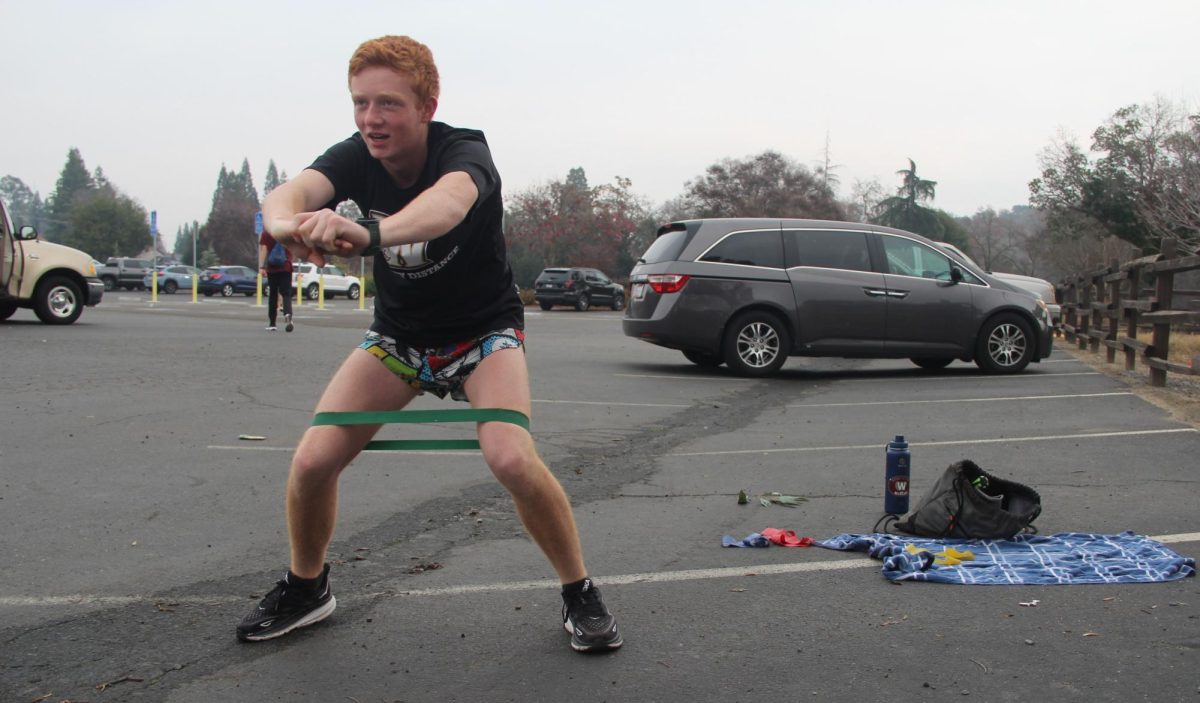Setting the stage for triumph in the cold outdoors, cross country runners attend optional conditioning during their winter break to help them during races for the upcoming track and field season that begins in February. These runners start training during winter break after the cross country season is over. Most of the time, 20 or more people from every grade level participate. Conditioning starts from 9-10:15 a.m. on Tuesdays and Saturdays and shifts to being directly after school on Mondays, Tuesdays and Wednesdays when school starts again, with Saturday morning practice still in place. Practice takes place at Sunset Whitney Recreational Area, but it also takes place at Springview Park and school. This helps them recover from their break which, decreases overall fitness, muscle strength and endurance. To clear up those issues, a training routine is reintroduced by Coach Jerry Dodge.
Athletes should run anywhere from two to five miles, which helps rebuild the stamina that was lost. For me, I started to go to conditioning as soon as it started. During conditioning, I typically run three to three and a half miles at a very slow and relaxing pace, usually around eight to nine minutes per mile. That’s less mileage than what I run during actual practice, but since I’m reintroducing my body back to the stress that comes with physical activity, taking it slow is vital.
Following a quick and easy run, an individualized stretching session takes place. This is crucial for a runner’s career, as it helps increase lower body strength, makes the body more flexible, and prevents injuries during a runner’s readjustment to training. I usually did exercises such as crab walks and seated toe touches to achieve this. Stretching was a huge part of the rehabilitation process, as it helps me relax and release the tension building up in my muscles after a run.
After not running for a couple of weeks, I started to feel less athletic than I should have been feeling before conditioning. I felt out of breath after running one mile. But, after going to conditioning and running more miles regularly, I started to feel more comfortable running longer distances with less strain on my body. As conditioning is voluntary, it allowed me to reassemble my life so that I could begin to deal with practice during my day. I could get back to a normal routine of going to practice and then dealing with whatever I had in my life during that time. Considering all that, conditioning has helped me mentally and physically, which is why I feel that this is important to the overall well-being of a runner or athlete in general.
I believe conditioning provides a significant advantage for athletes compared to those who begin training at the start of mandatory practice for the season. It gave me a head start last year over my competition, so continuing conditioning every year will give me even more of an upper hand. I won’t have to restart my process completely when I begin a new season, I can go straight to working hard to prepare for races. Due to this not being mandatory, a sense of discipline and commitment is fostered within athletes. They get used to having to practice, and they have time to readjust their lives so that it doesn’t interfere with their sport. It kickstarts the process of getting back to a routine that ultimately benefits wellness and success on the track.
By SIMON ARAGOZA
















